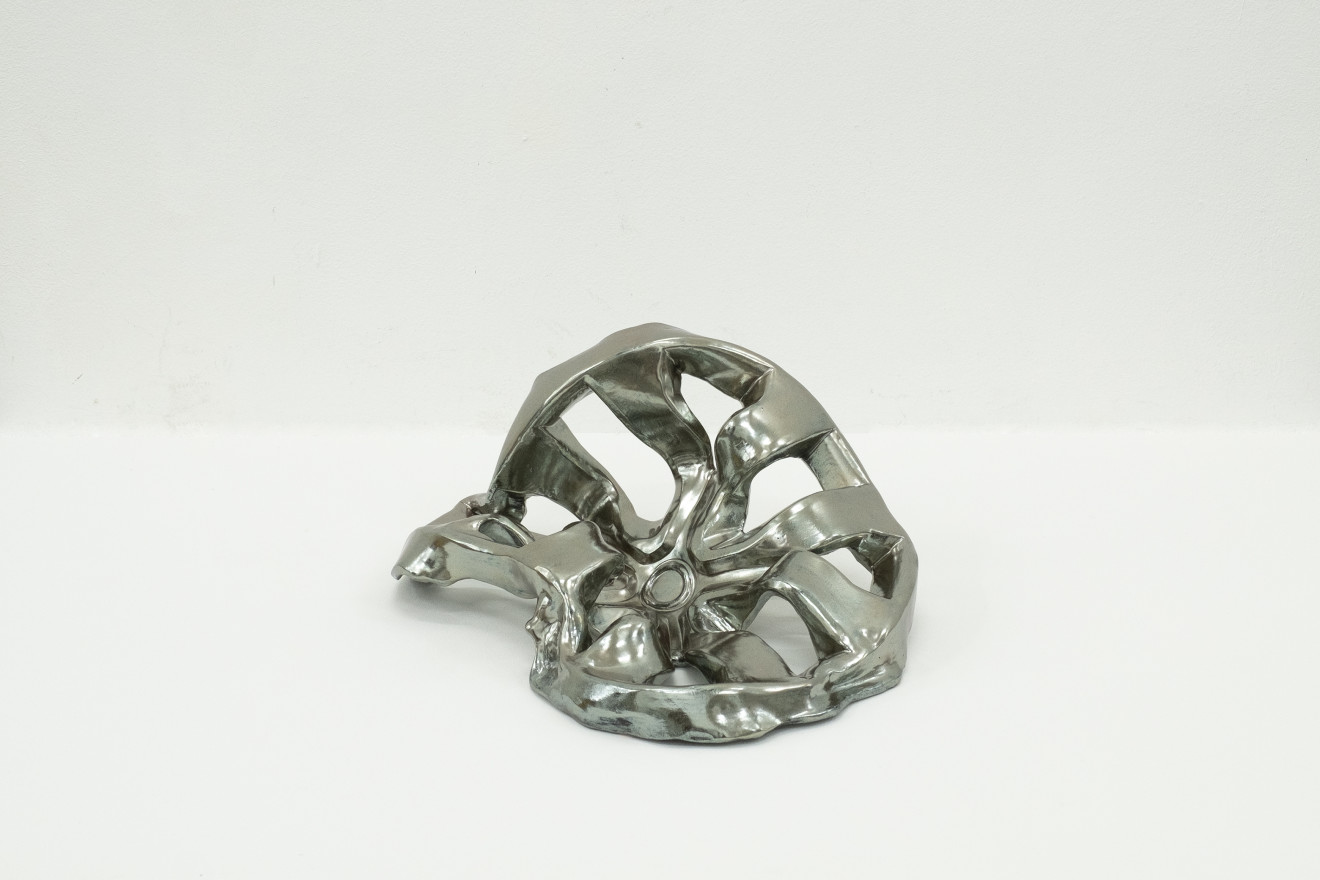Monika Grabuschnigg
Crash (Simulation #18), 2020
Glazed ceramic
20 x 34 x 45 cm
7 7/8 x 13 3/8 x 17 3/4 in
7 7/8 x 13 3/8 x 17 3/4 in
Further images
Crash (Simulation), 2019-2020 Deceptively ceramic – clay translated into metal – Crash (Simulation) (2019-20) is about where our craving for speed is leading us; what our dangerous addiction to exponential...
Crash (Simulation), 2019-2020
Deceptively ceramic – clay translated into metal – Crash (Simulation) (2019-20) is about where our craving for speed is leading us; what our dangerous addiction to exponential acceleration is causing.
Spat out from the aftermath of some near-future, continent-wide fire, in which the boundary between the real and virtual has been engulfed, these heat-deformed relics are the disfigured afterbirth of a convulsing world. Floor-strewn, the hubcaps conjure the cars we know but are as much as symbolic as figurative, calling out our hyper-optimized society in which human interaction – with each other and with our surroundings – is growing increasingly detached and abstracted.
Grabuschnigg’s series is an attempt to understand how we move through, understand, and ravage our increasingly hyperreal environments. It’s also about knowledge in the widest sense: how we’re moving from personal, analogue, communal knowledge to a technical and cold understanding of our universe. We have easy access to unlimited information but rather than more freedom, more opportunities, we face the crash-and-burn of system overload. Smoke-clouded alienation rather than blue-skied enlightenment.
Although intensely solid, teasingly tangible, the works also evoke bodiless speed; how our embodied cognition can zip from California to Australia in seconds, from night to day, from Instagram to Excel, Tinder to live-streamed Senate hearings . Everything at cardiac-shock pace, meth-driver hurry, anxiety-addled confusion. We can always go faster, the sculptures are telling us. We can always make more, do more, see more. But no matter our speed, we’ll always be overtaken by our aftermath.
There are slivers of hope here, though. Their symmetrical, crystalline, almost fractal design grasps on to nature Examples of those deeper patterns that pre-date us, that will long outlive us. Flowers, in memoriam, for our inevitable apocalypse.
– Martin Jackson
Deceptively ceramic – clay translated into metal – Crash (Simulation) (2019-20) is about where our craving for speed is leading us; what our dangerous addiction to exponential acceleration is causing.
Spat out from the aftermath of some near-future, continent-wide fire, in which the boundary between the real and virtual has been engulfed, these heat-deformed relics are the disfigured afterbirth of a convulsing world. Floor-strewn, the hubcaps conjure the cars we know but are as much as symbolic as figurative, calling out our hyper-optimized society in which human interaction – with each other and with our surroundings – is growing increasingly detached and abstracted.
Grabuschnigg’s series is an attempt to understand how we move through, understand, and ravage our increasingly hyperreal environments. It’s also about knowledge in the widest sense: how we’re moving from personal, analogue, communal knowledge to a technical and cold understanding of our universe. We have easy access to unlimited information but rather than more freedom, more opportunities, we face the crash-and-burn of system overload. Smoke-clouded alienation rather than blue-skied enlightenment.
Although intensely solid, teasingly tangible, the works also evoke bodiless speed; how our embodied cognition can zip from California to Australia in seconds, from night to day, from Instagram to Excel, Tinder to live-streamed Senate hearings . Everything at cardiac-shock pace, meth-driver hurry, anxiety-addled confusion. We can always go faster, the sculptures are telling us. We can always make more, do more, see more. But no matter our speed, we’ll always be overtaken by our aftermath.
There are slivers of hope here, though. Their symmetrical, crystalline, almost fractal design grasps on to nature Examples of those deeper patterns that pre-date us, that will long outlive us. Flowers, in memoriam, for our inevitable apocalypse.
– Martin Jackson












